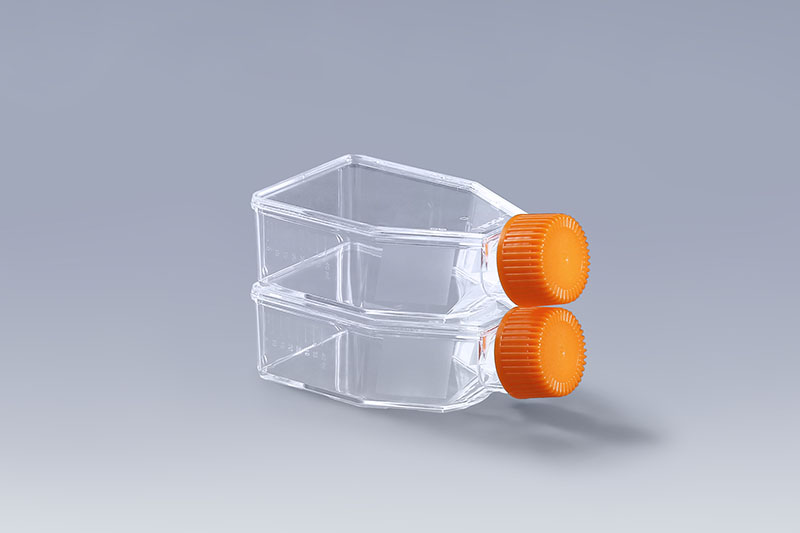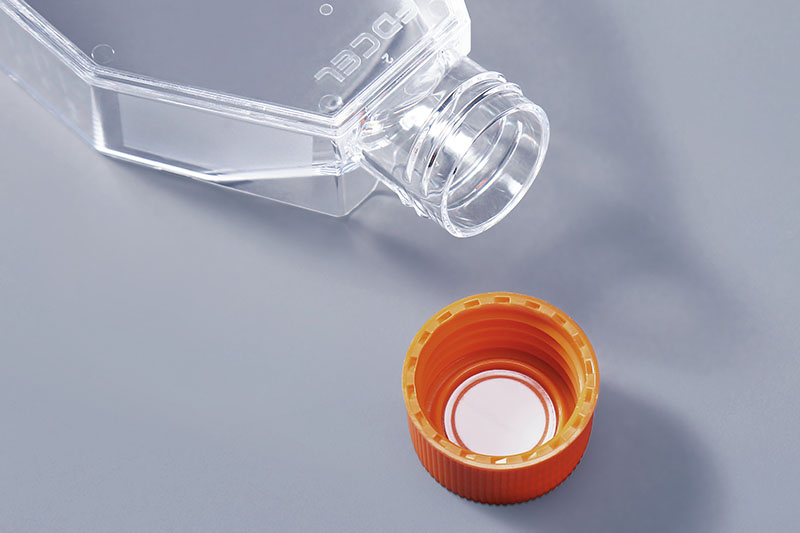Cell culture flasks are used more in the culture of adherent cells. When the cell density reaches a certain level, we need to carry out the cell passaging operation. Since the adherent cells are attached to the bottom of the bottle to grow, digestive enzymes are needed at this time, and collagenase is a commonly used one.
FuDau T25 Cell Culture Flasks
The chemical name of collagenase is collagenase (Collagenase), which can specifically hydrolyze the three-dimensional helical structure of natural collagen under physiological pH and temperature conditions without damaging other proteins and tissues. The chemical nature of collagenase is a protein, so it is very sensitive to temperature, pH and various factors that lead to protein denaturation, and is very susceptible to external conditions to change its own conformation and properties.
Collagenase is extracted from Clostridium histolyticum and mainly hydrolyzes collagen in connective tissue. When the tissue to be digested is hard and contains a lot of connective tissue or collagen, the effect of trypsin dissociation of cells is poor, and collagenase dissociation method can be used at this time. Collagenase only has a digestive effect on the intercellular substance and has little effect on epithelial cells. Therefore, it is suitable for digestion and separation of fibrous tissue, epithelium and cancer tissue, and can separate epithelial cells and collagen components without damage. The usual dose is 200U/ml (about 1mg/mL) or 0.03%~0.3%. Collagenase is divided into type Ⅰ, Ⅱ, Ⅲ, Ⅳ, Ⅴ and special collagenase for hepatocytes. The type of collagenase should be selected according to the cell type in the cell culture flask.
FuDau T75 Cell Culture Flasks
The above is the relevant information of key collagenases and applicable cell types. In addition, trypsin is also used to digest cells in cell culture flasks, which is also an enzyme with a relatively high usage rate.
The FAI climbed 5.9 percent year-on-year in the first 11 months of 2018, quickening from the 5.7-percent growth in Jan-Oct, the National Bureau of Statistics (NBS) said Friday in an online statement.
The key indicator of investment, dubbed a major growth driver, hit the bottom in August and has since started to rebound steadily.
In the face of emerging economic challenges home and abroad, China has stepped up efforts to stabilize investment, in particular rolling out measures to motivate private investors and channel funds into infrastructure.
Friday's data showed private investment, accounting for more than 60 percent of the total FAI, expanded by a brisk 8.7 percent.
NBS spokesperson Mao Shengyong said funds into weak economic links registered rapid increases as investment in environmental protection and agriculture jumped 42 percent and 12.5 percent respectively, much faster than the average.
In breakdown, investment in high-tech and equipment manufacturing remained vigorous with 16.1-percent and 11.6-percent increases respectively in the first 11 months. Infrastructure investment gained 3.7 percent, staying flat. Investment in property development rose 9.7 percent, also unchanged.
 English
English




















































